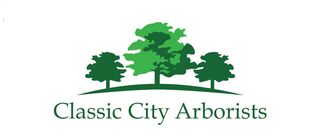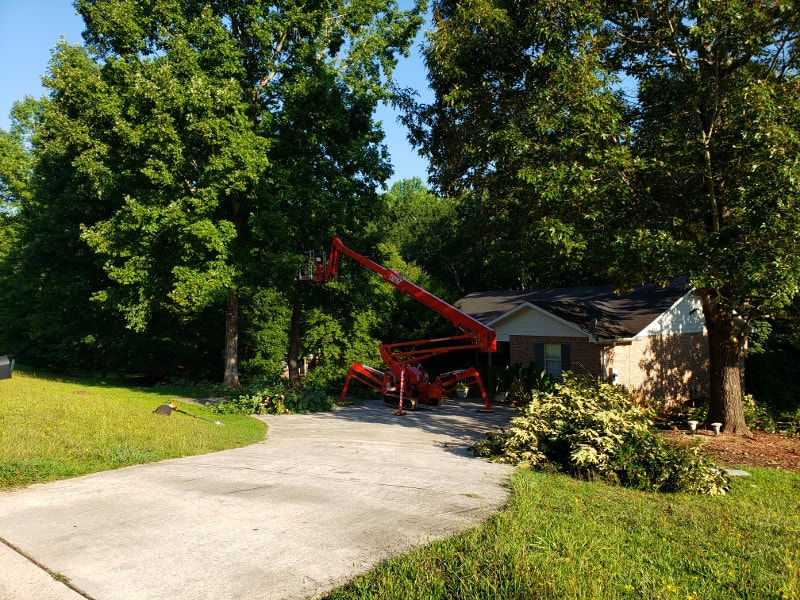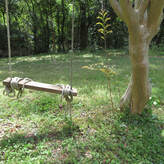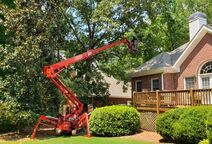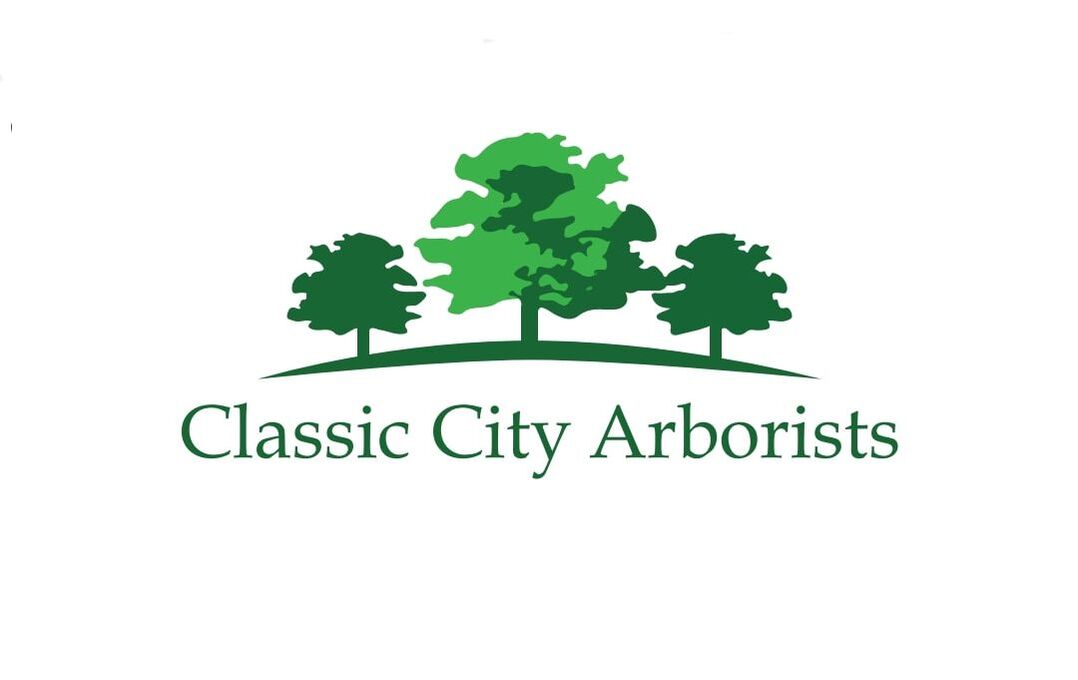|
News and Blog Articles
|
|
When you think of an arborist, or a tree care service, you probably think of just cutting down trees. While tree removal is definitely a large part of what we do, it’s not the only thing; we offer a variety of services, the most popular of which is pruning. Pruning may sound a little anticlimactic, like a service best saved for landscapers and lawn mowers, but pruning in the arboreal world is much, much more than just trimming back some bushes. Pruning a tree is used to help a tree continue to grow healthily, whether we’re thinning out the branches so the canopy doesn’t get overcrowded or cutting away dead limbs to prevent a fall that could result in property damage or injury. Healthy trees are happy trees, and we are in the business of keeping trees happy! Why Would A Tree Need to Be Pruned? There are a wide range of reasons why any given tree could use a good pruning. On the whole, pruning is used to improve the health of a tree and increase its chances of survival. On a smaller scale, pruning can also enhance a tree’s visual appeal to more attractively fit in with your property.
Smaller dead branches, though they may not seem like a big deal (especially if they aren’t an eyesore), still pose a hefty threat to the health of your tree. Once that limb starts decaying, it will turn into a breeding ground for a wide range of fungus, insects, and small animals. These pests can easily spread, causing damage and wreaking havoc on an otherwise perfectly healthy tree.
While dead and dying limbs are a very good reason to prune, sometimes, even healthy limbs could do with some pruning. Here in Georgia, we are prone to a range of inclement weather, from tornado warnings to hail to thunderstorms; with summer right around the corner, heavy summer rain is on its way, and any of these conditions can easily cause a heavy, protruding limb to fall from its tree.
Another reason to prune is to correct improper growth and help guide the tree into a growing pattern that is healthier and more sustainable. Trees can sometimes start growing all sorts of ways, whether it’s off to the left, bent over, or a little twisty, and all of these can cause significant issues for the tree down the road. Sometimes, trees split down the middle and start growing in two directions, in which case it will definitely need either pruning or cabling. In any of these situations, the best course of action is to prune so that the tree can return to a healthier growth pattern and live a long, happy life. Though the best time to prune is often in the fall or winter, when most trees have gone dormant for the cold weather, some trees may benefit from pruning in spring or summer. The Four Main Pruning Techniques When pruning a tree, there are four main methods your friendly neighborhood arborist will use: Cleaning is used to remove dead, dying, diseased, sickly, weakly-attached, or low-vigor branches from the crown of a tree. Thinning involves selective branch removal calculated to improve the tree’s overall structure, increase light penetration for photosynthesis, reduce canopy weight and prevent overcrowding to mitigate the risk of limb failure, and even just to help the tree retain its natural shape. Raising is the removal of the lower branches of a tree to allow for traffic or structures below, such as a shed, a vista, pedestrians on a sidewalk, or even a house. Reduction reduces the overall size of a tree by incorporating all three of the above while maintaining the structural integrity and form of the tree. The Golden Rule of Pruning One of the biggest mistakes anyone can make when pruning a tree is pruning too much. According to the International Society of Arboriculture (ISA), no more than one-quarter of a tree’s crown should be removed at any one time. If you prune away too much of the tree’s canopy, not only does it become structurally unstable, but it also often means the tree can’t get enough nutrients to sustain itself, since most of its leaves live in the canopy. This rule is especially important in a tree under stress, which basically means a tree that is already experiencing other problems such as fungal infestation, pests, structural deficiencies, or overcrowding. The most common form of over-pruning is called Tree Topping, sometimes referred to as tipping, heading, hat-racking, or rounding over. This method is used to cull back a tree’s canopy from growing too wide or a tree’s trunk from growing too tall. The problem with this method is that it involves removing the top-most part of the tree, usually in a large chunk, which decimates the tree’s viable leaves and makes it nearly impossible for the tree to get enough nutrients to survive. Without enough leaf coverage, what's left of the trunk of the tree can incur sun damage (think sunburn, but for trees!) that can inhibit the tree’s growth and success. This method can also involve cutting away branches down to nubs on lateral branches that aren’t strong enough to support themselves, leading to limb failure. Pruning is a vital service to keep your trees happy and healthy. If you think your trees might need pruning, we recommend you have a certified arborist come check everything out and decide whether or not any work needs to be done. If you’d like to schedule a free estimate with us, contact us to schedule your appointment today! To learn more about our free estimates, click here. And remember, no matter how you’re pruning, what you’re pruning, or why you’re pruning it, never prune too much! AuthorEmily Casuccio is sister and sister-in-law to Rebekah and Scott Rushing, and has over half a decade of experience in copywriting, copyediting, proofreading, and developmental storyboarding. She's worked with both published and undiscovered authors on both fiction and nonfiction, and takes pride in supporting local businesses. Her passion lies in the written word and helping authors of all capacities realize their dreams and achieve their fullest potential. To learn more about her, read samples of her work, or contact her, visit her online portfolio.
16 Comments
5/25/2021 12:12:15 pm
It was really interesting when you talked about how it is important to avoid pruning too much of a tree. It seems like hiring an expert is the best thing to do when taking care of a tree. A professional knows the different types of trees and how much needs to be pruned off each type.
Reply
8/18/2021 12:59:53 pm
Thanks for pointing out that we should remove dead trees to avoid damaging our property. This is really helpful because we have lots of trees around our bungalow house. With this, we are hoping to find tree removal experts on Monday who can safely get rid of the dead trees within five days.
Reply
8/19/2021 06:05:50 am
Hailey,
Reply
3/23/2022 12:34:19 pm
Thanks for this great article! This blog is the very example of a why watering alone cannot save your trees, must understand pruning techniques in order achieve what you want to achieve with your trees.
Reply
3/24/2022 05:42:03 am
Ridge Tree Service,
Reply
3/24/2022 09:43:40 am
Thank you for the useful article. Insights about 4 pruning techniques are good to know.
Reply
4/4/2022 07:37:46 am
Evergreen Tree,
Reply
6/1/2022 11:26:50 am
Thank you for sharing the article! explained in detail about Pruning!
Reply
6/2/2022 05:42:43 am
Bloom Tree Trimming Services,
Reply
6/30/2022 12:12:34 pm
It was really amazing you explained about how it is important to avoid pruning too much of a tree. thank you for sharing keep posting!
Reply
7/1/2022 05:53:03 am
Skyline Drywall Repair Service,
Reply
6/30/2022 12:47:02 pm
Thank you for sharing the Pruning. explained to remove unwanted branches, improve the tree's structure, and direct new, healthy growth. keep posting!.
Reply
7/1/2022 05:55:04 am
DMV Drywall Repair Service,
Reply
6/30/2022 01:17:55 pm
Pruning is one of the most important! thanks for sharing !
Reply
6/30/2022 01:46:17 pm
Thank you for sharing this article well said about pruning.
Reply
7/1/2022 05:56:15 am
Golden State Drywall Repair Pros,
Reply
Your comment will be posted after it is approved.
Leave a Reply. |
Categories
All
Archives
January 2023
|
|
23 Whatever you do, work at it with all your heart, as working for the Lord, not for human masters,
24 since you know that you will receive an inheritance from the Lord as a reward. It is the Lord Christ you are serving.
Colossians 3:23-24
24 since you know that you will receive an inheritance from the Lord as a reward. It is the Lord Christ you are serving.
Colossians 3:23-24
